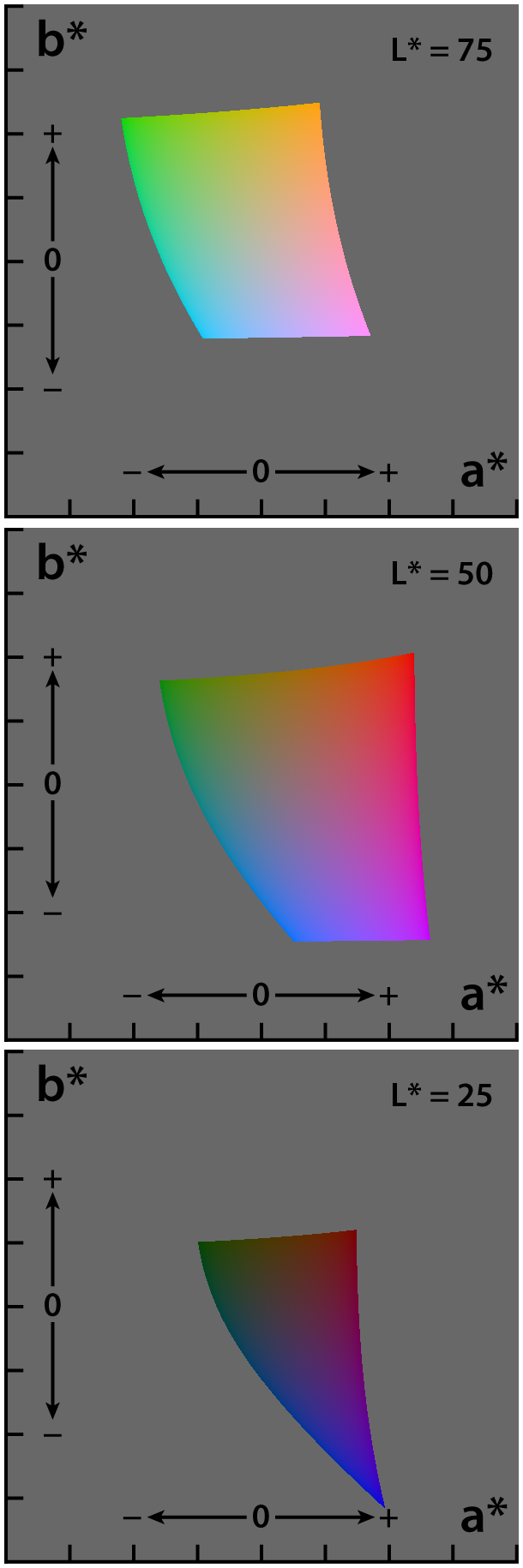
The Lab color space is a color-opponent space. The color opponent theory states that the human visual system interprets color information by processing signals from cones and rods in an antagonistic manner. The three types of cones have some overlap in the wavelengths of light to which they respond, so it is more efficient for the visual system to record differences between the responses of cones, rather than each type of cone's individual response. The opponent color theory suggests that there are three opponent channels: red versus green (a component in Lab), blue versus yellow (b component in Lab), and black versus white (L component in Lab). Responses to one color of an opponent channel are antagonistic to those to the other color.

No comments:
Post a Comment